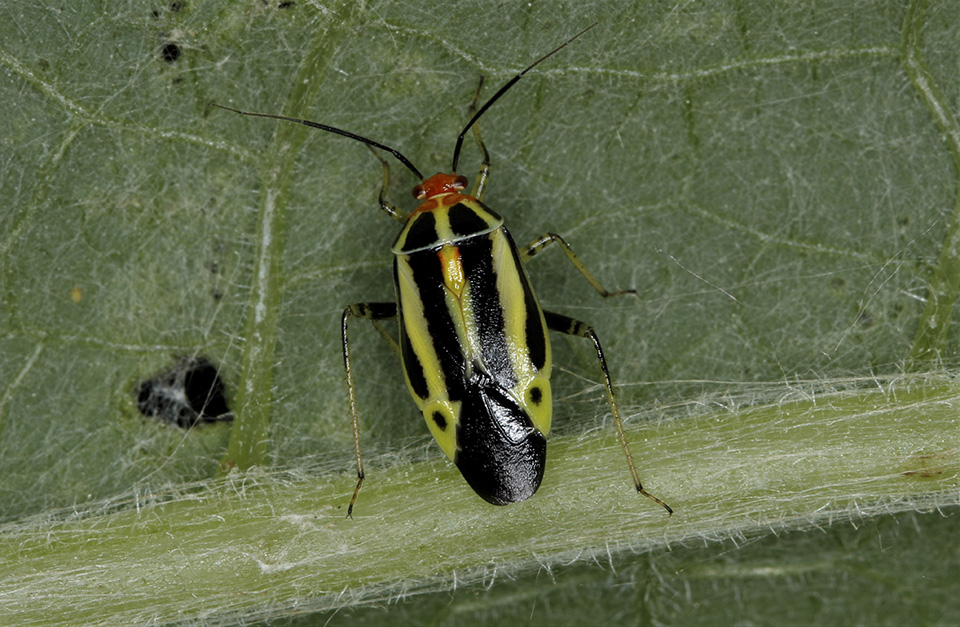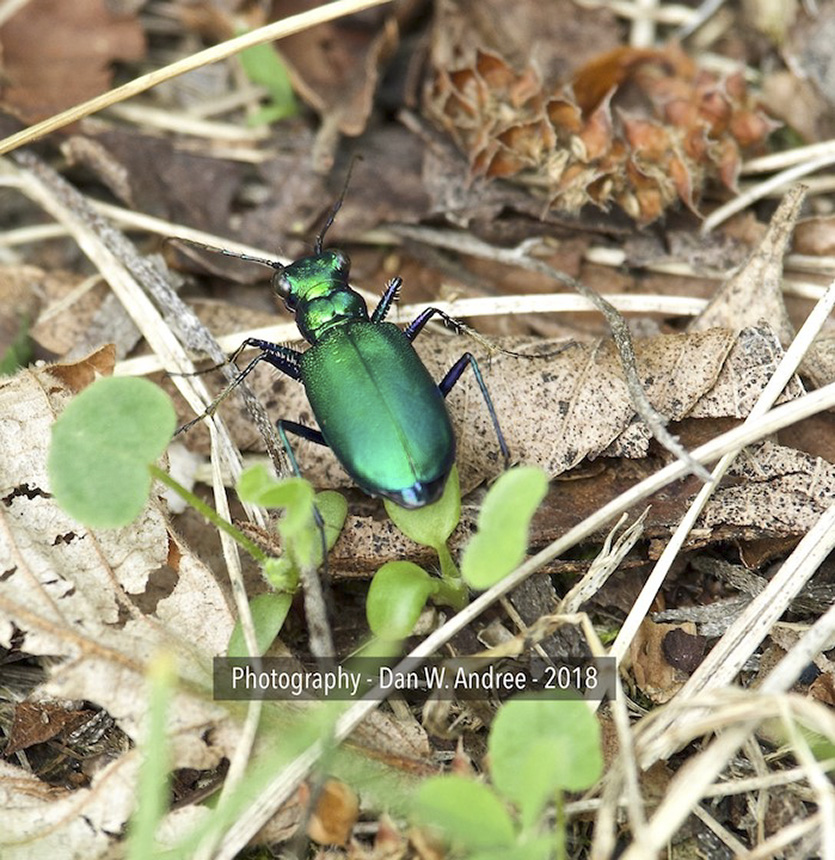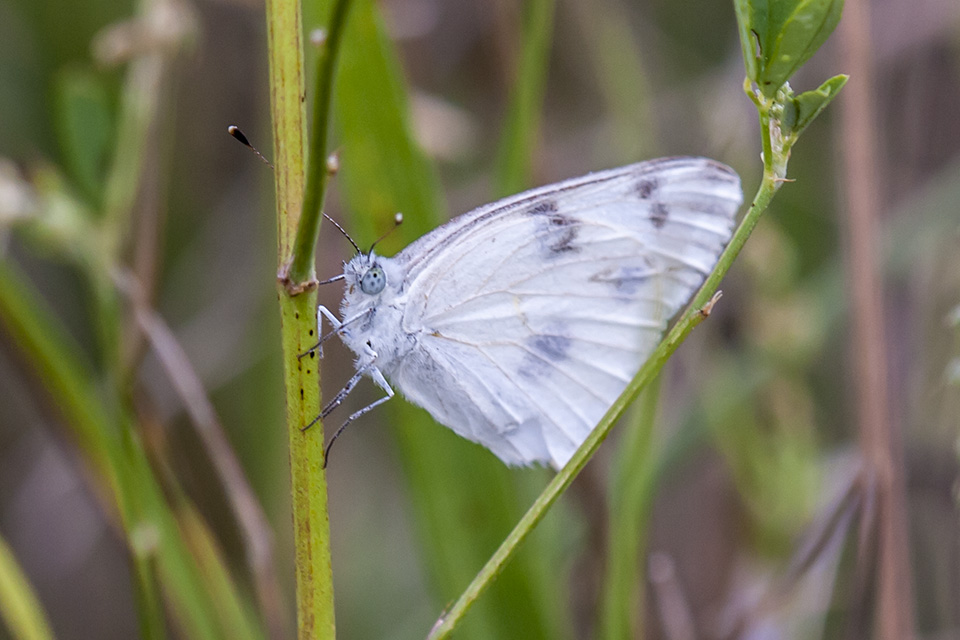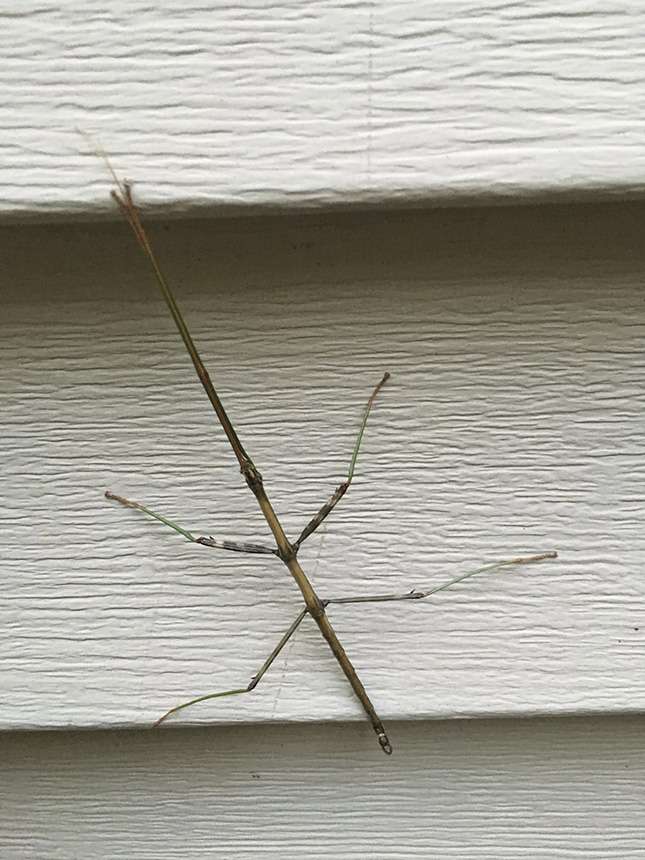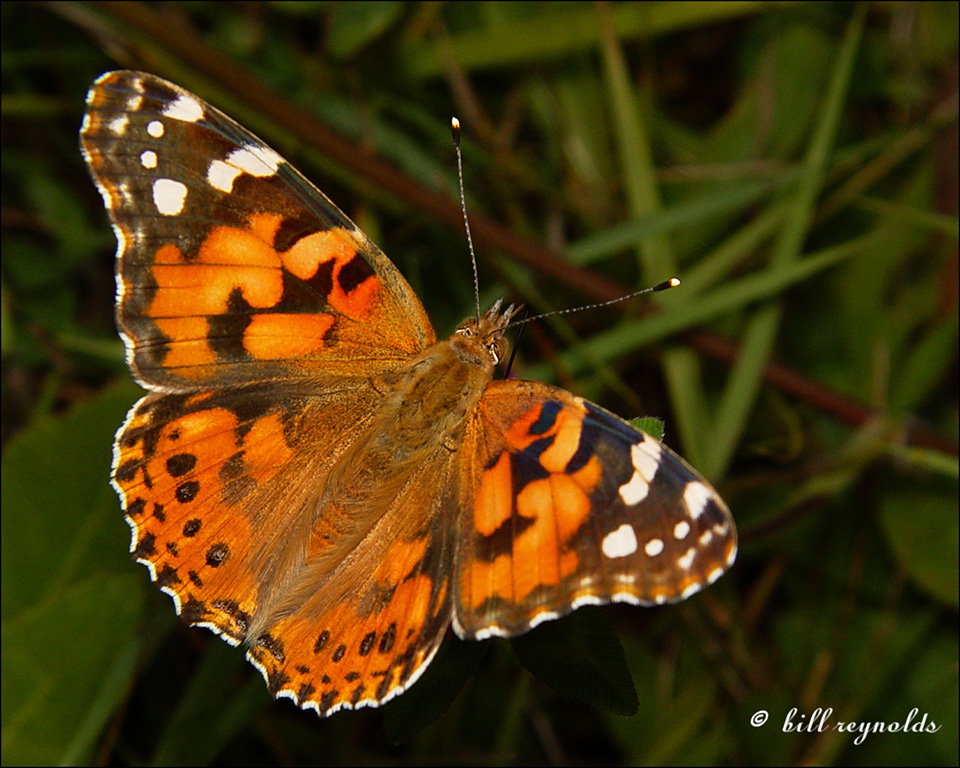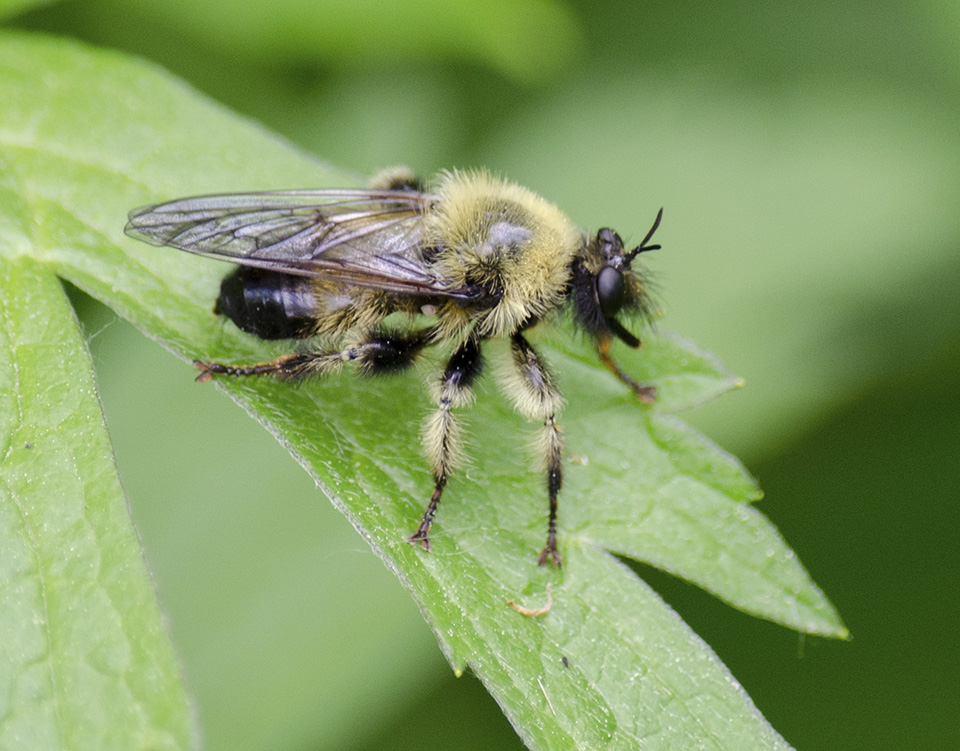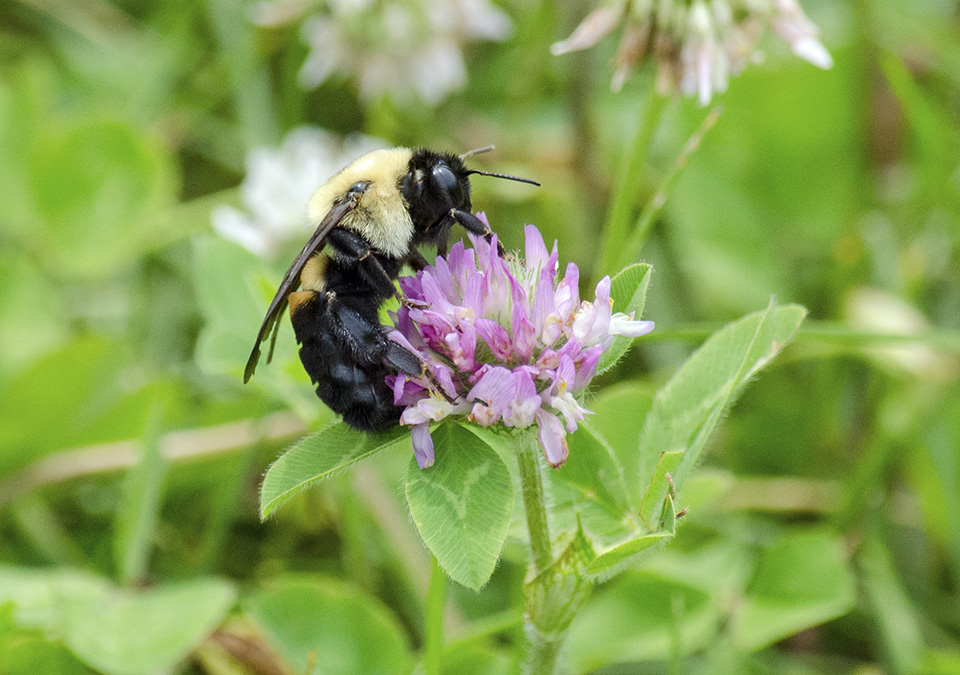Four-lined plant bug (Poecilocapsus lineatus) is a small, soft-bodied, colorful, true bug. It is common in northeastern and midwestern North America, including Minnesota. It is easily identified by the bright yellow or green body with four black stripes and the orange head. It can be seen from May to July in meadows, gardens, agricultural fields, and around homes.
Four-lined plant bug is considered a pest due to the damage it causes to ornamental plants. Adults and larvae feed on the leaves of herbaceous plants, especially those in the mint and aster families. Leaf damage appears as small, 1 ⁄16″ or less in diameter, light or dark spots on the leaf surface. The color of the spot varies with the species of the host plant. The spots are collapsed leaf tissue which eventually falls out leaving small holes. Larvae cause more leaf damage than adults.
http://www.minnesotaseasons.com/Insects/four-lined_plant_bug.html

